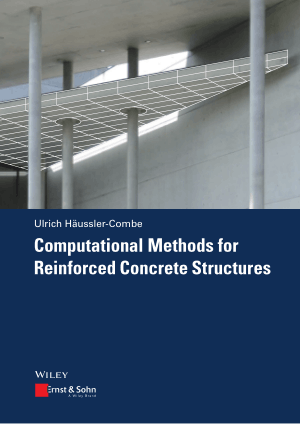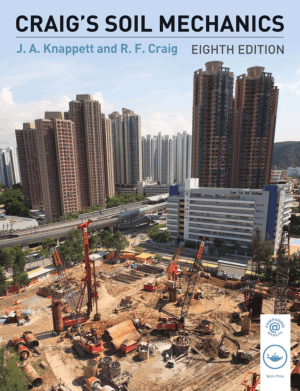Contents
Preface ix
Acknowledgements xii
PART ONE ADMIXTURES 1
1 Powdered air-entraining admixture in dry-mix
shotcrete
D.Beaupre, A.Lamontagne, M.Pigeon and J.-F.Dufour2
2 Properties of dry sprayed concrete containing
ordinary portland cement or fly ash-portland cement
J.G.Cabrera and G.R.Woolley8
3 New admixtures for high performance shotcrete
K.F.Garshol24
4 Advanced experiences with high performance
alkalifree non-toxic powder accelerator for all
shotcrete systems D.Mai38
PART TWO APPLICATIONS 47
5 Sprayed concrete in conjunction with electro
chemical protection of concrete
K.Dykes48
6 A dome for your home (or office)—innovative uses of
steel fibre reinforced shotcrete
L.E.Hackman and M.B.Farrell55
7 Low cost laminated shotcrete marine structures
M.E.Iorns62
8 Recent developments in materials and methods for
sprayed concrete linings in soft rock shafts and
tunnels
R.Manning70
9 Sprayed concrete for the strengthening of masonry
arch bridges
C.H.Peaston, B.S.Choo and N.G.Gong80
10 Application of thick and heavily reinforced shotcrete
J.Warner90
PART THREE FIBRES 1 01
11 Evolution of strength and toughness in steel fiber
reinforced shotcrete
A.D.Figueiredo and P.R.L.Helene1 02
12 Flexural strength modelling of steel fibre reinforced
sprayed concrete
P.J.Robins, S.A.Austin and P.A.Jones1 08
PART FOUR MATERIALS 1 18
13 Dry shotcrete with rapid hardening cement and
humid aggregates
Th. Eisenhut and H.Budelmann1 19
14 Polyolefin fibre reinforced wet-mix shotcrete
D.R.Morgan and L.D.Rich1 28
15 Sprayed fibre concrete: the way forward in civil
engineering
M.J.Scott1 39
PART FIVE REPAIR 1 47
16 The repair of Gorey Jetty in the state of Jersey
K.Armstrong and P.Quarton1 48
17 Wet process sprayed concrete technology for repair
S.A.Austin, P.J.Robins, J.Seymour and N.J.Turner
1 58
18 Wet sprayed mortars reinforced with flexible
metallic fibres for renovation: basic requirements
and full-scale experimentation
J.M.Boucheret1 69
19 Sprayed mortar repairs to highway structures
R.B.Dobson1 78
20 Aesthetic flatwork rehabilitation
J.H.Ford1 86
21 Sprayed concrete repairs—their structural
effectiveness
G.C.Mays and R.A.Barnes1 94
22 Long term performance of sprayed concrete repair
in highway structures
P.S.Mangat and F.J.O’Flaherty2 03
PART SIX SPECIFICATION 2 13
23 Contractual aspects of testing shotcrete and
rockbolts
R.B.Clay and A.P.Takacs2 14
24 Shotcrete standards—an American perspective
I.L.Glassgold2 24
25 Rehabilitation of concrete structures in Germany by
sprayed concrete
G.Ruffert2 32
26 Training and certification scheme for sprayed
concrete nozzlemen in the UK
G.R.Woolley and C.Barrett2 37
PART SEVEN SPRAY PROCESS 2 46
27 Particle kinematics in dry-mix shotcrete—research
in progressH.S.Armelin, N.Banthia and D.R.Morgan2 47
28 Fundamentals of wet-mix shotcrete
D.Beaupre and S.Mindess2 56
PART EIGHT TEST METHODS AND PERFORMANCE 2 67
29 Evaluation and testing of sprayed concrete repair
materials
P.Lambert and C.R.Ecob2 68
30 Evaluation of new and old technology in dry process
shotcrete
R.J.Liptak and D.J.Pinelle2 74
31 Strengthening of concrete bridges using reinforced
sprayed concrete
D.Pham-Thanh, S.R.Rigden, E.Burley and P.Quarton2 85
Author index 3 03
Keyword index 3 04
Preface
This book presents the proceedings of the American Concrete Institute/Sprayed
Concrete Association Conference on Sprayed Concrete held in Edinburgh on 10–
11th September 1996. This was the first joint venture between the two
organisations, although both have been promoting sprayed concrete (shotcrete)
for many years.
The ACI first established its standing committee on this material in 1942—
Committee 805 on Pneumatically Placed Mortar; this was reconstituted in 1960
as Committee 506 on Shotcrete to revise the ACI ‘Recommended practice for
shotcreting’, and has become one of the most authoritative sources of technical
information and standards for sprayed concrete.
The SCA, which is the British trade association, was formed in 1976 under the
name the Association of Gunite Contractors and later renamed itself the Sprayed
Concrete Association to reflect current European terminology. It has held
national and international seminars and conferences in the UK since 1979 and is
currently supporting European standardisation through EFNARC—the European
Federation of National Associations of Specialist Contractors.
The advent of European harmonisation was one of the factors that led the SCA
to approach the ACI about a joint conference in 1994. The aim was to provide a
platform for an open exchange of information, views and experiences between
practising engineers on both sides of the Atlantic. This has been achieved with
papers from North and South America and various European countries. It was
also expected that the event would contain a significant emphasis on repair
applications, as this is a dominant issue in the countries concerned, in contrast to
Scandinavia where tunnelling is the main activity. However, a glance through the
index will reveal that the agenda was by no means dominated by repair, but
reflected a broad spectrum of interests including specification, test methods,
admixtures, fibre reinforcement, materials, the spraying process and
performance.
The development of sprayed concrete will depend on how the challenges to
produce cheaper, higher performance, more durable concrete are met. Consistent
high quality is clearly a key issue and appropriate developments in materials
technology, equipment and design methods must deliver the high performance that
will be demanded of construction materials in the next decade. Some of the
papers reflect that there have been significant changes in the materials used in
sprayed concrete over the last ten years. Silica fume has become a common
addition to increase adhesion, strength and impermeability, and admixtures have
extended their influence from simple accelerators to include water-reducers,
super-plasticisers, air-entraining agents, hydration stabilisers and latex polymers.
Fibre reinforcement (mainly steel but also polypropylene) has also become a
common addition in both dry and wet processes to improve toughness and
impact resistance, but there continues to be substantial debate over appropriate
definitions and test methods. Special pre-bagged combinations of these materials
are available to give high performance in certain applications, including repair.
Progress in equipment has been less marked. Most contractors continue to use
conventional rotating barrel/bowl guns for the dry process and worm or piston
pumps for wet mix. Steady improvements have been made in recent years,
including the introduction of flexible machines that can spray dry or wet. In
some countries there has been a big swing towards the wet process, partly
because of the better control over mix proportions (particularly the water/cement
ratio). In the USA the two techniques have a roughly even share, whereas in the
UK the proportion is low but increasing, whilst countries like Germany are still
predominantly oriented to the dry process. These differences partly reflect the
functional emphasis, but also what is perceived to be good practice in the
engineering community. Undoubtedly there will be further shifts in the balance
as trade barriers are removed and technology is transferred across borders and
fields of application. Dry mix proponents need to address the consistency and
quality issues associated with manually controlled water addition, whilst the wet
mix process range of applications could be extended by improving its stop/start
flexibility.
The proceedings suggest that there needs to be more research and
development of design methods. In recent years the industry has benefited from
the introduction of a range of standard test methods and specifications. These
must be regularly updated and augmented by other appropriate documentation. In
Europe the Committee for European Normalisation has just established a
working group to produce a European standard specification for 1997. However,
engineers also need a framework of acceptable design methods to cover the
range of sprayed concrete structures, in particular repair and slope stabilization,
to help quantify and justify their design proposals.
It is hoped that the text will provide a ready source of reference for consulting,
contracting and materials engineers, clients, manufacturers, students and
researchers who seek views of current thinking in this area of concrete
technology.






